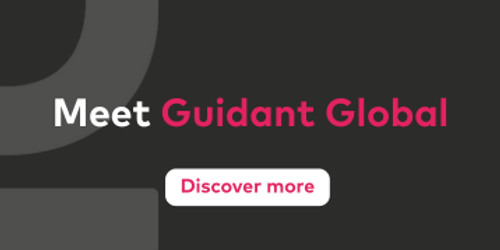

Author
Vice President, Enterprise Solutions
5 minutes
The Top 7 Workforce Trends for 2025
There is no doubt that 2025 will be a transformative year for workforce management. While talent acquisition, procurement, and HR leaders will likely face new challenges, they’ll also have the opportunity to make strategic moves that drive enhanced business performance.
Recently, I participated in an Ardent Partners panel bringing together experts from Opptly, Beeline, and TalentFusion to discuss top trends shaping the future of work, from the impact of global elections to the growth of skills-based hiring, and the evolution of artificial intelligence (AI). Our discussion shed light on strategies for clearing potential hurdles for human capital leaders and remaining competitive in an increasingly dynamic talent marketplace. This blog explores seven key trends to watch, and highlights taken directly from that enlightening conversation.
1. Changing global conditions are impacting talent and workforce management
According to the World Economic Forum, 2024 was the “year of elections,” with more than 2 billion voters heading to the polls in 50 countries. In 2025, we will monitor how ongoing geopolitical shifts, trade wars, and regional conflicts impact businesses. For example, sanctions or tariffs could impede access to talent and disrupt supply chains.
As companies adjust to such changes, businesses will need to incorporate long-term workforce planning strategies and solid workforce solutions, such as:
-
Remote and borderless hiring strategies – how to secure access to the widest array of talent at the right costs.
-
Contingent workforce upskilling – to achieve higher redeployment rates, greater loyalty, and more flexibility in your workforce.
-
‘Flexpertise’ – to leverage skilled contingent STEM talent, or ‘flexperts,’ to help businesses address immediate tech needs while they’re upskilling internal talent.
-
Inclusive hiring – data shows that businesses that embrace inclusive hiring practices consistently outperform those that do not.
-
Supplier diversity – companies with diverse supplier bases show a 133% greater return on procurement investments than those without supplier diversity.
2. Total talent strategy success hinges on its stakeholders
To build a true total talent strategy, you need input, buy-in, and support from the right stakeholders, including services and recruitment partners; internal talent acquisition and human resources (HR) teams; employment branding; technology leadership; operations; and executive leadership.
Once everyone is on the same page, then you can create a total talent strategy, which should include:
-
Workforce planning
-
Integrated talent channels
-
Technology for total talent visibility, access, and reporting
-
Strong change management strategies
-
Measures for success
3. Businesses are demanding real results from AI
No longer a shiny new object, businesses are demanding results from AI. This begins by shrewdly assessing potential AI partners and solutions. Key questions to ask include:
-
Is your model open-source or proprietary?
-
What data does your model use to learn?
-
How do you ensure against bias?
Decisions surrounding AI will inform the future of work. AI can help organizations assess skills, improve talent engagement, predict future workforce needs, and more. The key is to look at it as a practical application tied to overall business goals.
4. Direct sourcing continues growing
Direct sourcing continues to build upon its reputation as a powerful and cost-effective workforce solution strategy. Often done in partnership with a managed service provider (MSP), direct sourcing supercharges an organization’s contingent workforce via employer brand-led, technology-enabled talent communities managed by expert recruiters.
Guidant Global’s Advanced Direct Sourcing, for example, activates a business’s employer value proposition (EVP) and brand to attract, curate, and engage exclusive talent communities. This approach supports repeatable hiring needs without requiring intermediary suppliers.
5. Contingent workforce programs get more strategic
As the contingent workforce grows, businesses want partners that can bring a more strategic lens to their contingent workforce management programs. If hiring organizations are too focused on tactics, then they won’t see how the shifting markets or current events could impact resources.
The right MSP can help optimize contingent workforce performance, providing you with the best quality contingent talent to meet your organization’s business goals. MSPs also help mitigate risks, ensure compliance, and gain visibility and insights into the contingent workforce, which are essential for organizations that have contingent workers around the globe.
6. Skills-based hiring takes center stage
Skills are quickly eclipsing four-year degrees, job titles, and past work experience when it comes to hiring decisions. Increasingly, employers are looking at talents’ skills composition, and for good reason. Hiring for skills is a more accurate predictor of success than traditional elements. According to BCG, a skills-based hire is five times more likely to predict job performance than an education-based hire.
Skills-based hiring offers significant advantages. Removing requirements broadens your talent pool and gives you access to a more diverse workforce. Moreover, technology such as AI empowers you to sort through candidate skills seamlessly so you can identify the right talent for the right job at the right time.
In short, skills have become the new talent currency. If you aren’t focused on skills-based hiring, you will fall behind in a competitive, rapidly changing labor market. By embracing this approach, you’ll be prepared to identify, attract, and retain top talent.
7. The tech stack continues evolving
No one solution will address all your workforce needs. Organizations are developing tech stacks based on best-in-class solutions that seamlessly talk to each other. Choose workforce solutions partners that have sound relationships with other top providers and will serve as true partners throughout your technology journey.
Guidant Global has built outstanding partnerships with some of the best providers in the industry to complement our proprietary technology. We understand how to implement technology and continually optimize it, delivering better and faster results.
In 2025, workforce management will face challenges and opportunities. By choosing workforce experts who are as invested in your success as you are, you’ll be sure to achieve your business goals, no matter what obstacles may arise. Reach out to discuss how Guidant Global can help you navigate the future of work.
Insights to drive workforce performance
Workforce insights in your inbox
Sign up for our newsletter with the latest workforce management news, insights, analysis and more.
Australia
Suite 1403, Level 14
309 Kent Street
Sydney
NSW 2000
United Kingdom
United States
27777 Franklin Road
Suite 600
Southfield
Michigan 48034








